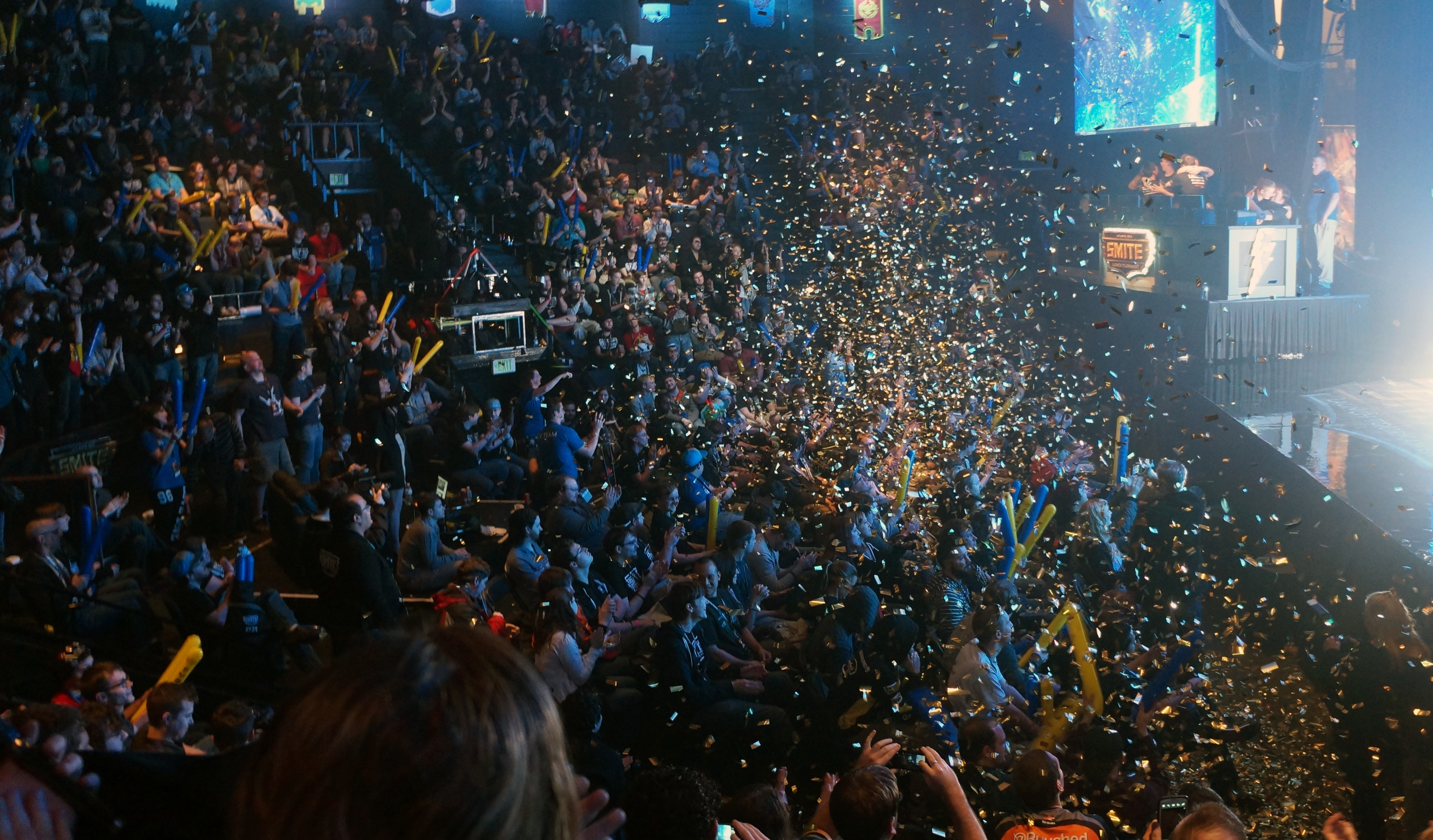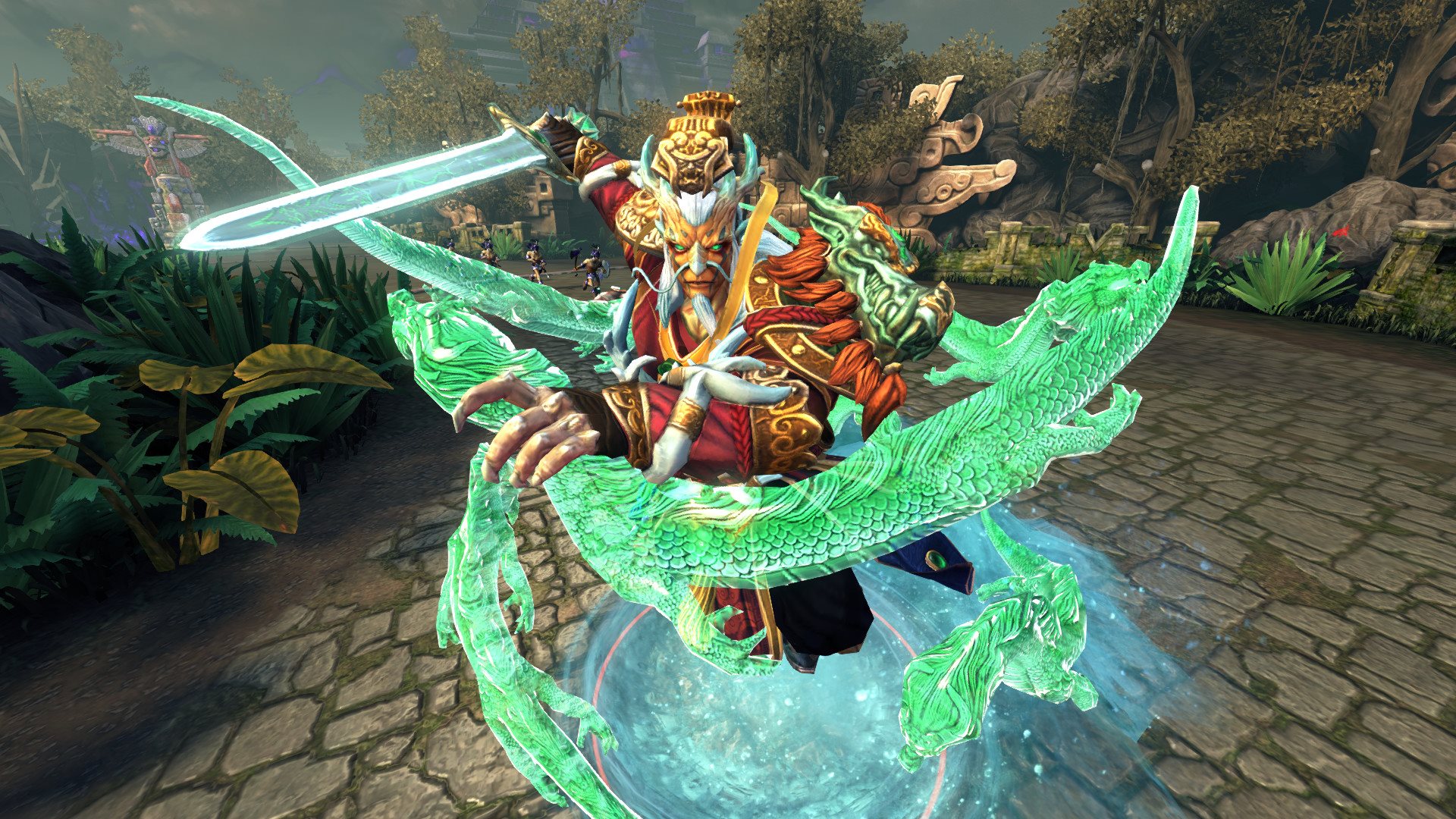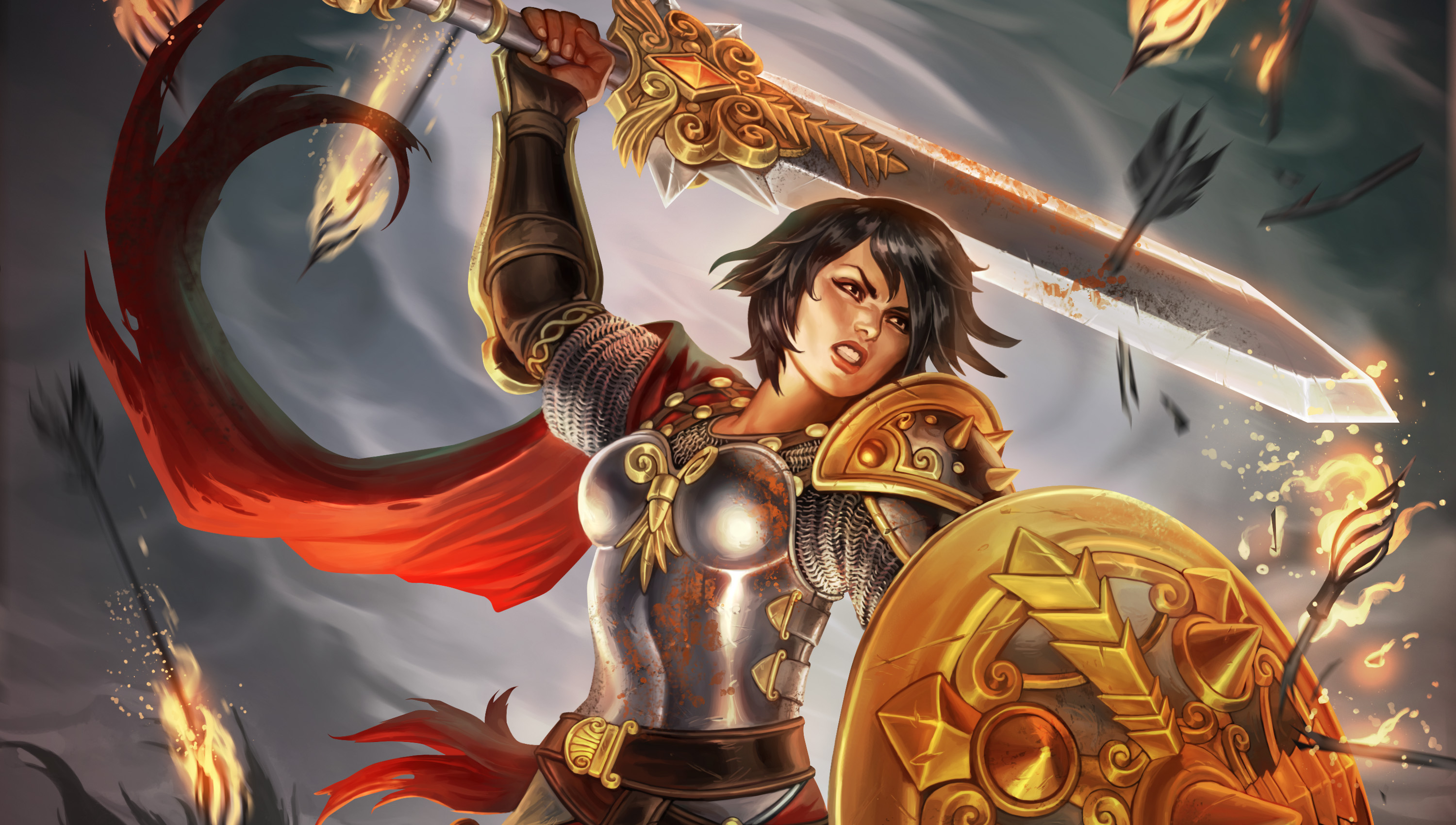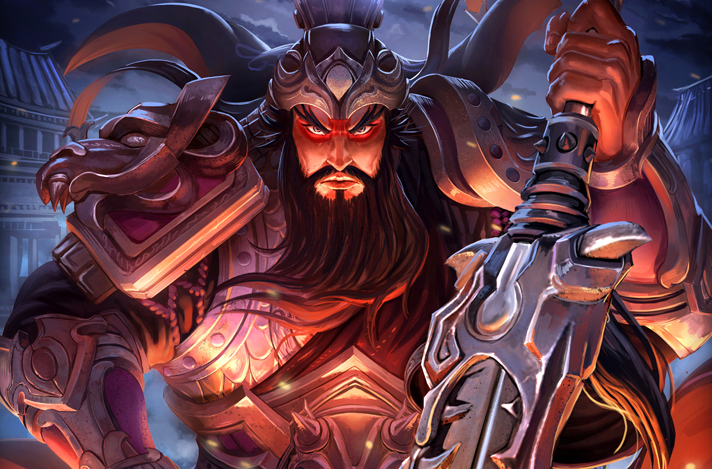Smite's $1 million tournament cap sets an example for esports to follow

In August, the best Dota 2 teams in the world competed for $18,429,613 at The International, a prize pool greater than every previous International tournament combined. It was the biggest prize pool in esports history. Back in January of 2015, third-place MOBA Smite offered the sixth largest: $2,612,259 at its World Championship. The trend is obviously towards larger events and larger piles of cash, rained down on the crème de la crème of professional esports players. It makes for great headlines and a hell of a dramatic tournament. But are those massive piles of money actually good for the players or the esports scene at large?
Smite developers Hi-Rez Studios didn’t think so, which is why they decided to limit the 2016 World Championship to a $1 million prize pool, spreading the rest of the money out across a season of smaller events.
“To be honest with you, it was a change we were very nervous about,” Hi-Rez President Stew Chisam told me in a recent interview at the Smite Super Regionals, the last major event before 2016’s World Championship in January. “To come out and say, ‘hey, my World Championship prizing is going down’ is something to be nervous about, even though our overall prizing was staying the same or going up some from year-to-year. So I think what has pleased me the most about that change was how very well received it was. I got thank you notes from players. Even, I think, the general audience really understood the reasons we did that and saw very clearly that this was best for the long term health of the sport.”
Hi-Rez considers the change a success for Smite, but what about the players? They’ve spent all of 2015’s Season 2 playing for what’s supposedly a wider and shallower prize pool. Do they like the change, too?

“I think it's really good,” said Trixtank, who plays the guardian role for EU Team Paradigm. He’s been playing Smite since the beta, and was on the winning team of the 2014 Launch Tournament (which had a comparatively meager $218,000 prize pool).
“If you go to Worlds you obviously don’t want it to happen, but I actually feel it’s good anyways, because you get a more stable income,” Trixtank said. “If for example there are more EU tournaments, you get to go to more events. It both helps Smite out—the fact that there are so many tournaments, so a lot of people are going to gather and watch it—it’s also a more stable income, because you get to more tournaments and get more income more consistently.”
"Putting more money back into the players is good, because you spend so much of your time doing this regardless of where your seed is." - Cloud9's JeffHindla
PainDeViande, the captain for NA team Enemy, was even more positive. “I think that's the greatest move they could’ve done, ever,” he said. "If it wasn’t for that, a ton of teams wouldn't be able to play. I’m qualified for Worlds and I’m happy they did that.”
The biggest gaming news, reviews and hardware deals
Keep up to date with the most important stories and the best deals, as picked by the PC Gamer team.
Another longtime player, Cloud9’s JeffHindla, offered a similar opinion. “I don’t know exactly where that cap should be,” he said. “I don’t know if a million is…what the cap number should be for Worlds, but overall putting more money back into the players, and just all the teams playing throughout the [Smite Pro League] is good, because you spend so much of your time doing this regardless of where your seed is. If you’re in the SPL, you’re really committed to playing. I think it’s a positive thing. I think it helps everyone, for the most part.”
Hi-Rez’s attempt to spread out the prize money seems well-received by pro players and fans alike, but more prize money would be a good thing, too. JeffHindla’s comment alludes to the reality that the cap for Worlds could be bigger—$2 million, say—and more money could still be pumped into the scene to allow players to earn a living throughout the year. This is perhaps where Smite differs most from Dota 2 and League of Legends, backed by Valve’s and Riot’s deep pockets and communities of millions more players. Hard numbers are difficult to pin down, but Smite is on its way towards 15 million registered accounts, according to Hi-Rez president Chisam, while Dota 2 has more than 10 million active players every month, pointing to a dramatically larger total playerbase.

One team of pro players I talked to, the dominant Epsilon, expressed frustration with the Smite scene’s money being spread thin this year.
“I guess they’re holding back a lot of money for next year or something, but I found it interesting that the total prize pools for this year, even with Worlds, I don't think they even amount to last year’s Worlds,” said jungler Adapting. “In all the games that are played, all the LAN tournaments, there’s still less money being distributed.”
“It’s so far the worst season to play Smite, money-wise,” said solo laner Dimi. He added: “It’s weird because we think there’s less [money] this year, but you don’t actually know what’s going on with the game. You have people saying there are more concurrent players than ever, but you don’t really know what’s happening with viewers or money coming into Hi-Rez. I think they are crowdfunding for season three right now. Because the Odyssey is where you get items. You give money to Hi-Rez because you’re buying gems, in the end. I feel like if they don’t have a lot of money in [season three], it might be a sign that Smite is slowly falling downwards.”
"It's so far the worst season to play Smite, money-wise." - Epsilon's Dimi
“Then again, it could be the opposite,” said team captain iRaffer. “There could be tournaments that haven’t even been announced yet. We’re just out of the loop, is the best way to put it. But hopefully it’s growing, you know?”
So there's not exactly a consensus. But Epsilon’s complaints don’t point to an inherent problem with the Worlds prize pool cap—if they don't win Worlds in January, they'd wind up with even less money. Their complaints do, however, highlight how much money it takes to make pro level play a sustainable living, year-in and year-out.
Adapting also suggested that the smaller prize pool could be concerning for viewers at this year’s World Championship, with the prize dropping from $2.7 million to $1 million. Will it look like the game is shrinking? And even if it’s not—if season three has more players than ever before, which will likely be the case given Smite’s imminent launch out of beta in China—will there be enough money to go around? My talk with Chisam didn’t point to a dramatic influx of money for the 2016 season.
“I think what you’ll see us do going into next year is continuing [this] strategy,” Hi-Rez’s president said. “If you’re good enough to make the Smite Pro League, you should not have to worry that much about other jobs and other things. Obviously you may have to control your expenses based on whether you’re winning a lot or losing a lot. I think it’s equally important to make winning mean something. But we want to make sure that people can make a living playing Smite and make a career out of it, and that’s the way our prize pool is designed. What I’d like to do next year is have a few more bigger events over the course of the year, which is something we’re looking at very seriously right now.”

I think the elite of Smite’s pro sphere, like Epsilon, may be frustrated by the continued smaller payouts from 2016’s tournaments. But for aspiring pro players and the lower seeded teams, Hi-Rez’s approach may mean the difference between livelihood and hobby.
“I spent some time with Justice, who’s the last-seeded team in Europe, and from their perspective—I was managing and coaching them a little bit—it’s huge for them to have more money,” said Lydia Picknell, assistant manager for Paradigm. “They work just as many games as everybody else, and originally they would get barely anything to support themselves for that. I think spreading it out to everybody is fantastic. I think all the players deserve to be compensated somehow. Of course, they won’t get the same as we do here. It sucks for us to not win as much, but it’s fantastic for the entire scene.”
And it’s easy to forget, with prize pools like The International’s approaching $20 million, that a million dollars is still an awful lot of money.
“I’m hoping that moving forward we’ll see more of these splits where you get rewarded for being the best,” said PainDeViande, whose team Enemy came into the Super Regionals as underdogs and secured a trip to Worlds by beating out two better-seeded teams. “We’re going to play for a million dollars. That’s worth it, right? That’s amazing. But if we didn’t quality, we’re not screwed completely.”

PC Gamer Pro is dedicated to esports and competitive gaming. Check back every day for exciting, fun and informative articles about League of Legends, Dota 2, Hearthstone, CS:GO and more. GL HF!

Wes has been covering games and hardware for more than 10 years, first at tech sites like The Wirecutter and Tested before joining the PC Gamer team in 2014. Wes plays a little bit of everything, but he'll always jump at the chance to cover emulation and Japanese games.
When he's not obsessively optimizing and re-optimizing a tangle of conveyor belts in Satisfactory (it's really becoming a problem), he's probably playing a 20-year-old Final Fantasy or some opaque ASCII roguelike. With a focus on writing and editing features, he seeks out personal stories and in-depth histories from the corners of PC gaming and its niche communities. 50% pizza by volume (deep dish, to be specific).

